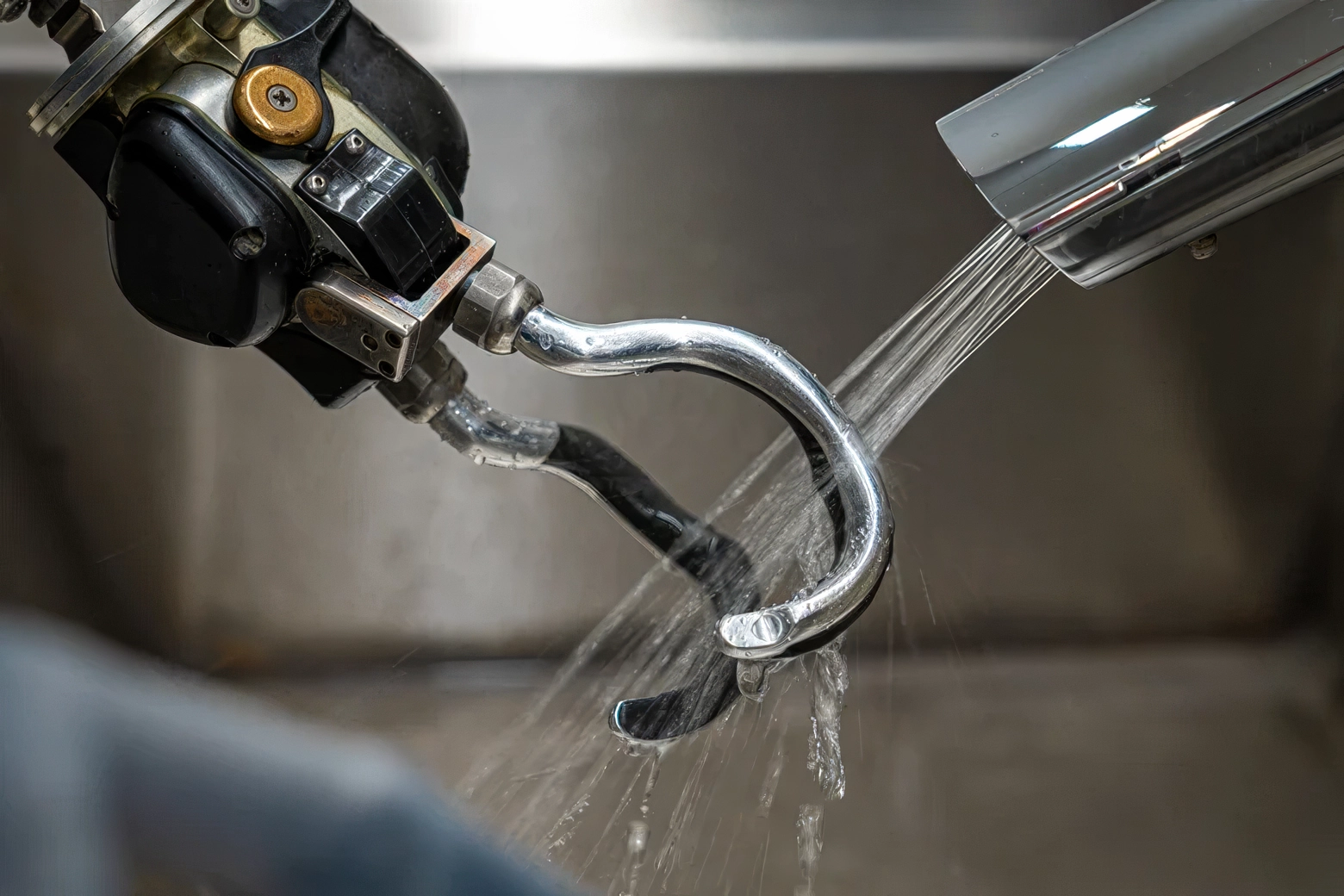A terminal device is the part of your arm that interacts with the people and things around you. When you’re getting a prosthesis, you can choose the type of terminal device that works best for you, and if you want, it doesn’t have to look like a hand at all. We list some options below. Please note that for this article, we're mostly going to focus on options for people who have a through-the-palm limb difference or higher — for finger and partial hand options, please see our article, Finger and Partial Hand Devices in Action.
Passive
If your goal is to have a prosthetic hand that strongly resembles a sound hand, then a passive device, like a silicone restoration might be the way to go. Our patient Abe was getting tired of people stopping him at the airport or when he was out to eat with his wife — everyone wanted to know about his cool multi-articulating myoelectric “robot” hand. So he decided that getting a second prosthetic device that resembles a natural, skin-toned hand would work best for him. He was even able to tattoo it!
It’s important to note that passive hands do not move on their own, though some have multi-positional joints embedded in the fingers that allow you to hold items.
In addition, there are passive terminal devices that can allow for heavy-duty activities, like Point Designs Digits. You can learn more about those digits in our Finger and Partial Hand Devices in Action article.
Body-Powered
Body-powered devices offer their users the most rugged, heavy-duty option for terminal devices. The body-powered hook can deal with water, mud, paint, varnish — whatever you need to deal with. Our patient Jason needs his bilateral body-powered hooks for all kinds of tasks on his farm, including running his riding lawnmower and while working in his barn, as you can see in this video:
Our patient Eduardo, a professional chef, uses his body-powered hook when in the kitchen. Austin Anderson (more about him below) prefers another body-powered terminal device, the V2P, to help him with chores on his farm. There are also “voluntary closing” terminal devices, which remain open until the user pulls the operating cable with their harness. This allows the user to control how much force they want to apply when closing. In addition, there are body-powered prostheses that look like conventional hands. These hands provide some function, but not as much as the hooks.
Myoelectric
Myoelectric devices work great for people who want more function without the restrictions of a harness that can put stress on your shoulder joints. There is an electric version of the body-powered hook, the Electronic Terminal Device (ETD), and the newer ETD2. There are two types of electric hands available: single-motor and multi-articulating hands. You can watch our patient Shaholly use her bebionic multi-articulating hand in her profile video:
Single motor hands provide simple opening and closing – you can watch our patient Sherri using hers in this profile video. Multi-articulating hands are the most technologically advanced and robotic looking options, and they open and close in a range of different grip patterns. While these options provide superior function, they do come with a major consideration – electric components are more fragile and therefore should be used cautiously in wet, dirty or dusty environments (though the TASKA hand is water resistant and somewhat waterproof). Many myoelectric hands, both single-motor and multi-articulating, come in different sizes so there are more options for women and people with smaller hands.
Activity-Specific
Activity-specific devices are solutions for tackling specific work tasks or hobbies that cannot be accomplished with other prosthetic options. Activity-specific terminal devices are more like tools and often have unusual shapes. The unique challenges our patients face require creative solutions, and we love getting an opportunity to create something new and customized. For example, when Lizzi Smith needed to amplify her training for the Paralympics, we created an activity-specific device that could do exactly what she wanted. In order for Austin Anderson to return to his job as a tree faller in Yosemite National Park, we found a terminal device that allowed him to quickly release his chainsaw power switch:
There are so many options available to people with a limb difference these days — but you shouldn’t feel that you are forever limited to just one. If you already use one of the above terminal devices but you would like to have a second one, you may find our article about being eligible for a second device helpful. Our clinical therapy specialists help each of our patients learn how to use their terminal device. Want to learn how you can get your first or second (or third …) terminal device? Please contact us. If you have experience with any of the above terminal devices, or one that we haven’t listed, please leave a comment for us and your peers below. Thanks for reading.






%20President%20and%20Senior%20Clinical%20Director.jpg?width=600&height=600&name=John%20M.%20Miguelez%2c%20CP%2c%20FAAOP(D)%20President%20and%20Senior%20Clinical%20Director.jpg)










No Comments Yet
Let us know what you think